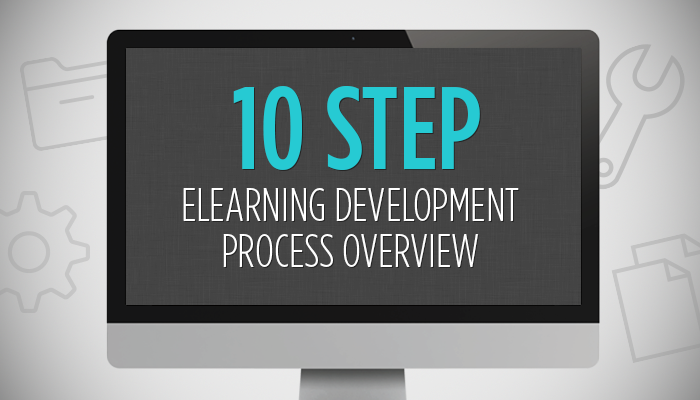10-Step eLearning Development Process Overview
- Create an eLearning style guide: Your eLearning project should be a reflection of your organization’s brand and market position. Protect and reinforce your corporate/organizational identity through your eLearning projects. Be sure to document and communicate to everyone involved standards such as: Logo terms of use (size, colors, etc.); your official corporate colors (by Hex number); your corporate-mandated fonts (font, color, size, etc.) Remember also to select and stick with a targeted monitor resolution (800×600, 1024×768). You don’t want to have scrollbars appear for users of 800×600 resolution because you picked 1024×768 for example.
- Define the eLearning project scope: Document items such as the course name, the estimated courseware runtime/seat time, your project start (kickoff) and end (production-ready) dates, general subject matter and existing course content (source materials like Word documents, PowerPoint presentations, etc.)
- Complete a project Kickoff Questionnaire: This is a detailed questionnaire that identifies items such as target audience, eLearning standard (AICC or SCORM), Accessibility requirements (if any), general functionality/features (Glossary, help, search functions, etc.), desired interactivity and media complexity level (simple PowerPoint conversion or interactive Flash-based custom content), grading/testing requirements, audio/video, etc. Be sure that all key stakeholders and subject matter experts agree upon the items in this questionnaire or that at least the person with final signing authority approves the project specifics.
- Perform initial content review and SME interviews: Gather any existing source material (instructor guides, student hand-outs, PowerPoint presentations, tests, quizzes, videos, etc.) and review them for possible reuse. Meet with a Subject Matter Professional and other key stakeholders to develop a rough course outline based upon key learning objectives. Map learning objectives to specific measurable items (e.g. in the form of test questions), and map those to content that covers these learning objectives. Identify any content gaps that may exist and fill them with subject matter interviews.
- Develop course outline and Rough-cut Narration: Create a course outline that includes the key learning objectives in the order in which they should be delivered to the learner (if this is a linear-flowing course). Write first-draft narration focusing upon creating analogies, explanations, exercises, and other items that most effectively communicate the given concepts. Review with SME and other interested stakeholders. Challenge the group to contribute creative (yet practical/doable) ideas and raise the bar.
- Develop a prototype: Craft a full final production-ready representation of a short section of the course (e.g. 5-10 minutes). Use this as an opportunity to, through proof-of-concept, confirm that you can pull off the creative ideas and deliver on the vision crafted during earlier stages. This prototype will establish the baseline and set expectations for the final end-product.
- Refine and complete the storyboards: Based on lessons-learned during the prototyping phase, refine your rough-cut narration and develop final drafts along with complete media treatment notes.
- Produce the Course: Record the audio, assemble the pictures, animations, and other visual effects, perform complete Quality Control on the courseware and deploy.
- Evaluate the results: Review performance reports (your LMS should track and report useful/actionable data). Analyze how the course is performing for learners and vice-versa. Look for areas where the content may be weak and require modification. Interview learners for specific areas the liked or disliked about the experience.
- Revise, re-deploy, re-evaluate, and refine: Continuously improve the course as budget, time, and necessity allow.
